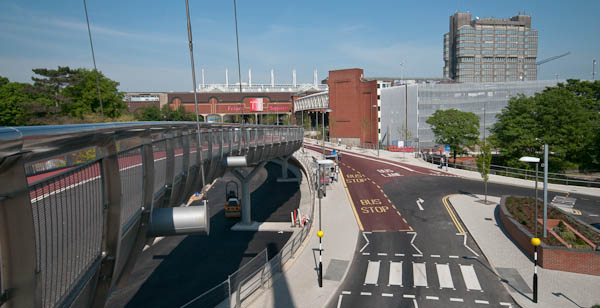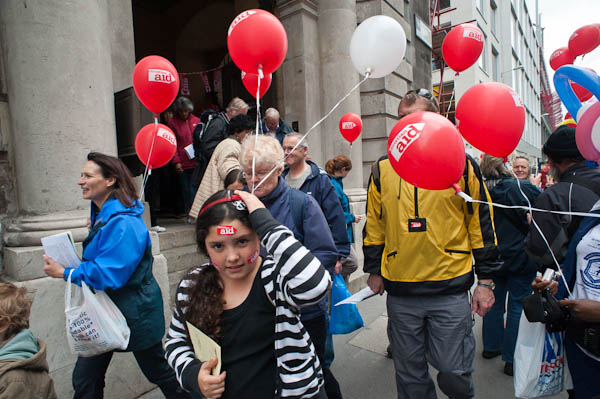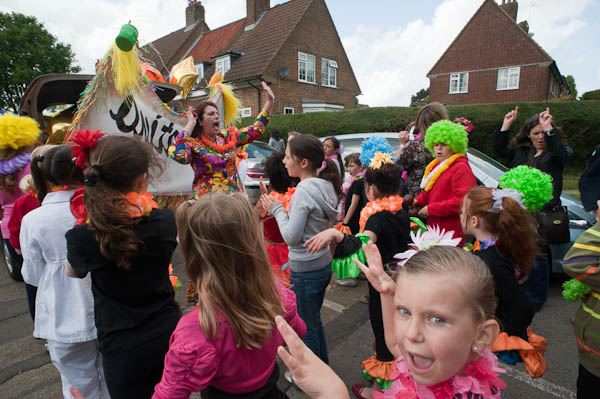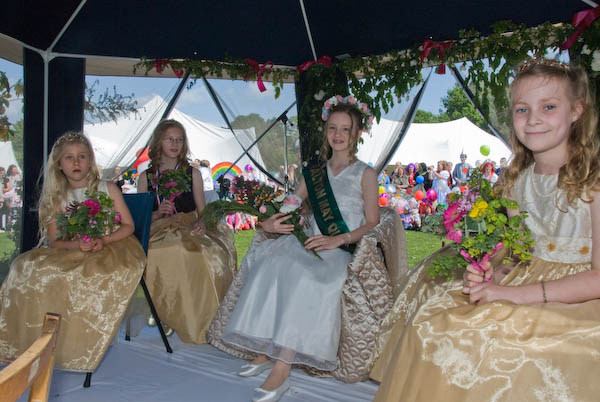No, not a real wedding, just in case anyone is thinking I’ve flipped. Exactly two years ago, US forces attacked a wedding party in Haji Nabu, Afghanistan, killing 47 people. It was one of a number of similar incidents which have contributed to thousands of Afghan civilians being killed by US/NATO forces.
Protesters from Voices in the Wilderness UK, Justice Not Vengeance and London and Oxford Catholic Workers organised a Die-In on the second anniversary of this massacre in wedding dress, with brides and grooms and wedding guests.

This was a non-violent protest against the war in Afghanistan and in sympathy with the victims of NATO aggression there, and they marched on The Permanent Joint Headquarters in Northwood, Middlesex from which our wars, including that in Afghanistan, are run. Police allowed the marchers to approach the area, but stopped them outside the camp around 200 metres before the main gate.

Here around half of the 40 or so protesters staged a die-in, lying on the road and blocking it for around 45 minutes before police eventually removed them. Six people who insisted on continuing their protest by going back onto the road after being removed were led away by police. They were held for several hours before being charged and released to appear in court at a later date.
You can see more pictures and more about the protest on My London Diary.
Wet Weather
Wednesday morning was cold and wet. The rain wasn’t particularly heavy but it was persistent. We can probably all agree there’s only room for one Martin Parr in photography, and while his ‘Bad Weather‘ was one of his most interesting books, the odd effects caused by water droplets on the lens and other hazards are generally things to be avoided rather than emulated. Photographing in the rain was, frankly, a pain (and lying on that cold road, even on bin bags must have been pretty uncomfortable.)
Both the Nikon D300 and D700 I was using stand up pretty well to rain and the real problems I have are with lenses. Mainly I was shooting with a 20mm f2.8 on the D700, and as always with a UV filter on the front. I worked with a microfibre cloth in my left hand, keeping the front of the lens covered except while actually taking pictures, and wiping the filter obsessively, but still there were plenty of shots spoiled by raindrops on the filter. I don’t own a lens hood for this lens – with a 20mm lens hoods offer little protection either from sun or rain. A carefully placed hand is considerably more effective against the sun (and yes I do often have to crop the odd finger out of pictures) but doesn’t work for rain.
On the D300 I was using my Nikon 18-200, but this is truly a fair weather lens. Even a hint of damp in the air tends to deposit on inner lens surfaces, having got dragged in by the pump action of the zoom. Mostly this stayed under my coat, and the longer lens hood (it’s a 27mm equivalent at its widest) although a pathetic piece of design that falls off regularly, does help a little to keep the rain out during use.
















